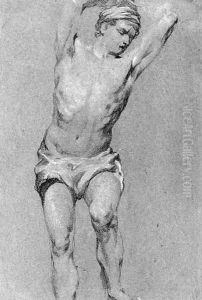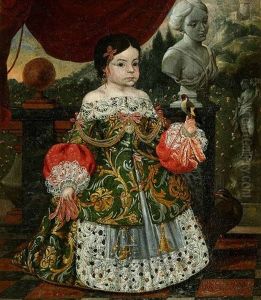Juan Conchillos Y Falco Paintings
Juan Conchillos y Falco was a Spanish painter born in 1641 in Valencia, Spain, and died in 1711. His life and work are significant within the context of Spanish Baroque painting, a period characterized by dramatic intensity, rich color, and bold use of light and shadow. Conchillos y Falco, although not as widely recognized as some of his contemporaries, played an important role in the development of this style within the Valencian school of painting.
Conchillos y Falco's early life was rooted in Valencia, a city with a vibrant artistic community during the 17th century. He was likely trained by local artists and was influenced by the prevailing Baroque sensibilities of the time, which included a focus on realism, emotional depth, and religious themes. Throughout his career, Conchillos y Falco worked on a variety of commissions, including religious works for churches and cathedrals, as well as portraits and mythological scenes.
Despite the lack of extensive documentation about his life, it is known that Conchillos y Falco's work was appreciated in his time, and he received various commissions from religious institutions and private patrons. His paintings are characterized by their dynamic compositions, the expressive portrayal of figures, and his adept use of chiaroscuro to enhance the emotional and dramatic effect of his scenes. Conchillos y Falco's contribution to the Spanish Baroque movement is seen in his ability to convey complex spiritual and emotional states through his art.
After his death in 1711, Juan Conchillos y Falco's influence persisted in the Valencian school, where future generations of artists would continue to be inspired by his mastery of the Baroque idiom. Although his name might not be as familiar as other Baroque masters, his work remains an important testament to the rich artistic heritage of 17th-century Spain.

